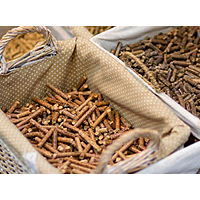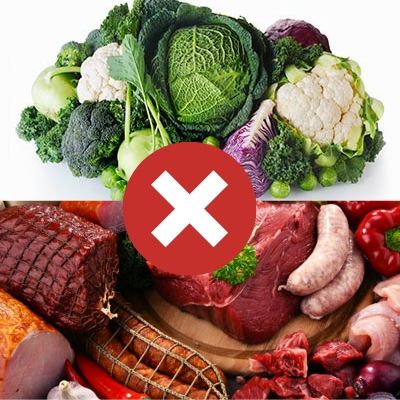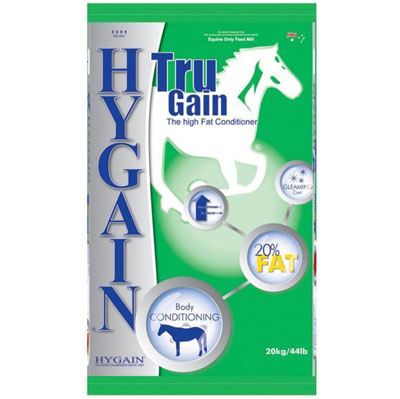Choosing The Right Feed For Your Horse
Author: Pet Station Date Posted: 15 August 2020


Of course, each animal comes with its own eating requirements based on what they would normally consume in the wild, as well as their individual likes and dislikes. When it comes to horses, there are certain dos and don’t in terms of their daily feeds. Therefore, you should research exactly how to provide the best feed for your four-legged friend, as well as what to avoid, and where best to source horse feed. Luckily for you, this article includes everything you need to know about feeding your horse.
What Feed is best for Horses?

Horses have a very specific diet based on what they would normally consume in the wild. Horses have a unique digestive system as they are natural herbivores, differing greatly from the diet of say a human. Horses generally consume high-fibre foods, but in small amounts over a long period of time, rather than in set meals as humans do. Horses actually spend the vast majority of their day slowly munching on something. In the wild, a horse prefers to graze on things such as pasture grass and tender plants. This ensures that they get the nutrients they need, but also maintains dental health. However, feeding a horse lush pasture when they are not used to it can be harmful. Other great sources of staple feed for your horse include hay, grains like oats and corn, concentrated mixes of grain, flaxseed, beet pulp, and more, salt and mineral supplements, water, and of course the odd treat such as apples, carrots, sugar cubes, or candy.
What to Feed a Working Horse?
Of course, working horses need a far larger and more concentrated diet than other horses. This is due to the fact that they get more exercise and exert more effort into their day-to-day chores. All horses need water, nutrients, energy, protein, minerals, and vitamins, but the more exercise a horse does, the more of the above they need. The most affected by exercise of these must-haves are nutrients, as muscles need this energy to perform. Therefore, you should be increasing the nutrient diet of your performance/working horse. Muscles are fuelled mainly by stored carbohydrates and fats. Protein is an optional energy source but is nowhere near as efficient. The increased protein needed will likely come from the added energy foods anyway. Your working horses will also need a slightly higher mineral and vitamin count in their diet. Exactly how much of each of these food groups depends on the amount of exercise your horse does each day, but tables and charts can be found online to guide you. Good food sources for active horses include alfalfa hays, grass hays, oats, barley, corn, and oil.
How many Pellets should I feed my Horse?
The general rule is that an average horse, regardless of how much exercise they are getting, should be consuming 2% of their body weight each day in food. This should come in a combination of forage food and concentrates. Horses who get little exercise should be getting almost all of their food from forage, while high-performing horses should be getting a 50/50 split between forage and concentrates. Therefore, the easiest way to determine how many pellets to feed your horse is to do it by weight, depending on how active your animal is from day to day.
What horses should not eat?
It is important to remember that your horse has a very different diet to both yourself and any other animals you may own. Your horse is not built like a human or a dog, they require their own specialist treatment. That being said, a number of people constantly make the mistake of feeding their horse foods they might consume themselves, or offer up to their other pets. Here is a comprehensive list of food items you should not be feeding to your horse:

- Caffeine
- Chocolate
- Garlic
- Onions
- Tomatoes
- Fruit seeds and pits
- Dog and cat food or treats
- Potatoes
- House plants
- Rhubarb
- Dairy products
- Bread products
- Cabbage
- Broccoli
- Cauliflower
- Avocado
- Meat
- Fruits with stones
- Brans
- Lawn clippings and compose
What should you feed a young horse?
Younger horses need different eating requirements to a fully-grown or older horse, due to the fact that they are still growing. Therefore, it is important to know what to feed your young animal and how it differs from others you may own. You should be feeding your young horse little and often, making any changes to their diet gradually as their gut is still delicate. Do not be tempted to overfeed them, do not add loads of supplements to their diet, do not mix your own feed, and do not get too hung up on protein. You need a good mixture of protein with vitamins and minerals to ensure growth and the strengthening of bone and cartilage. The best way to achieve this is to purchase a specialised foal or youngstock mix that is designed for younger horses. However, make sure to research the mix before feeding it to your horses, ensuring that it is suitable for their age and breed. The most important thing here is to set up a good feeding habit, promote growth and health while avoiding fattening your horse up as that can lead to future health problems.
What is the best grain to feed a horse?
There are plenty of different grain options out there when it comes to feeding your horses, with each carrying a distinct difference when it comes to qualities and benefits. Here is a list of some of the most popular and beneficial horse grains out there, as well as what they bring to the table.
- Oats – These are seen as the most popular and safest grain for your horse due to the healthy fibre content. The high bulk per nutrient content makes it hard for the horse to overheat. The heavier the oats, the more nutrients they have. They can be fed either whole or processed.
- Barley – Another good grain option, barley is lower in fibre than oats but denser in energy. Barely is harder than oats, so is usually rolled before being fed to the horse. Crushed or ground barely can be too heavy for a horse gut and can cause colic.
- Corn – One of the best grains in terms of energy. It also has a high carbohydrate content. For example, corn contains around three times as much as the same amount of oats. Corn can be fed on the cob, shelled, cracked, steamrolled, ground, or crushed. However, it should be used in moderation.
- Milo – High-energy grain. Commonly used in the southwestern parts of the US. Should be mixed with bulky feed and needs to be pre-cracked.
- Beet pulp – A good source of fibre and energy, but is low in protein.
- Soybeans – A good protein supplement.
What is a good source of protein for horses?
There are a number of good quality protein sources for horses, and it should be a staple part of their well-rounded diet each day. Here are some of the most commonly-used protein foods: Soybeans, tick beans, lupins, seed meals, hull-less oats, chia seed, alfalfa, spirulina, supplements deficient in lysine, milk proteins, and more.
Pet Station – The source of your horse feed
Pet Station is a family-owned business in Albury, New South Wales, with years of experience in the pet and horse industry. This team of experts stock thousands of tried and tested products on their shelves, acting as a one-stop-shop for all of your horse feed needs. Pet Station understands that you always have your animal’s best interests at heart, which is why they offer the best products at competitive prices. Pet Station is also an absolute knowledge bank when it comes to providing for your horse, meaning that the team is always happy to answer any questions you may have, listen to your individual story, and point you in the right direction towards the products that best suit your needs.







